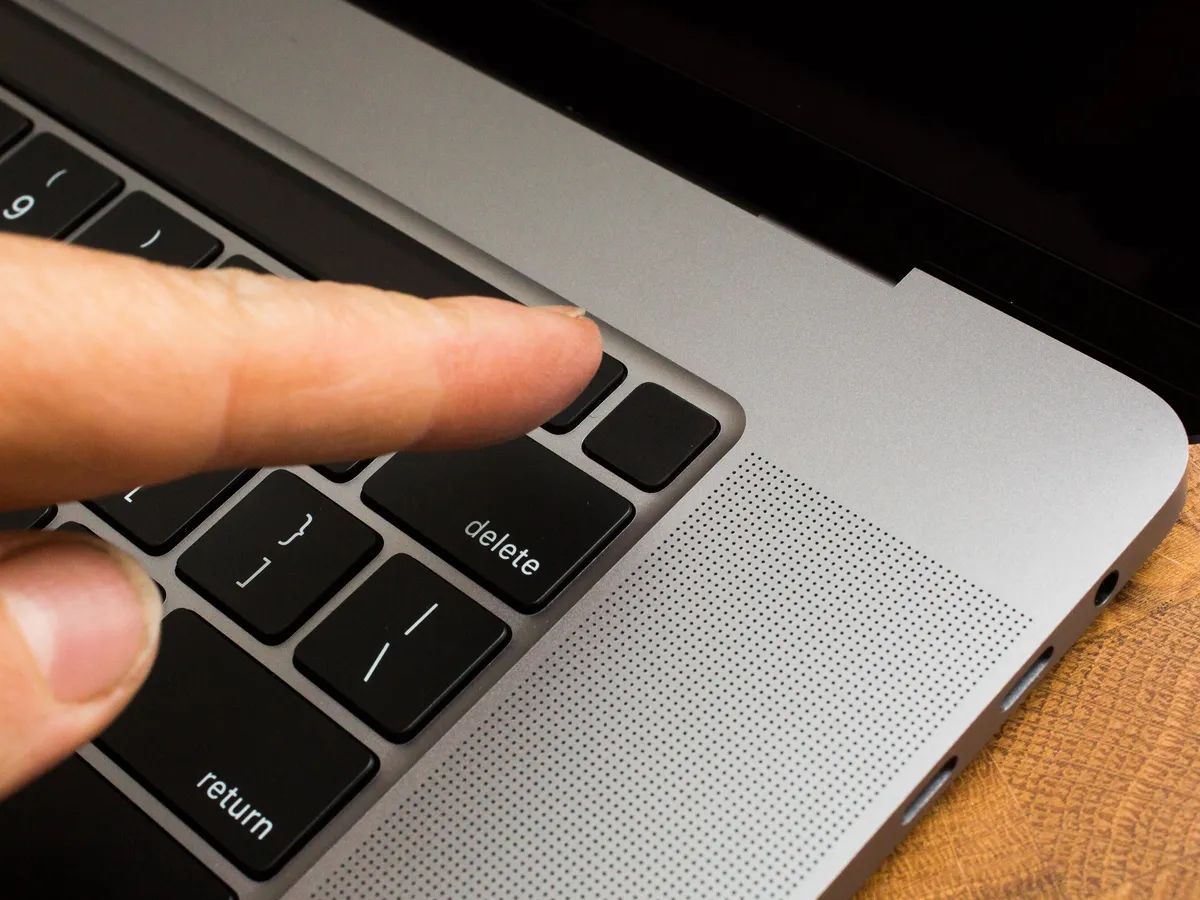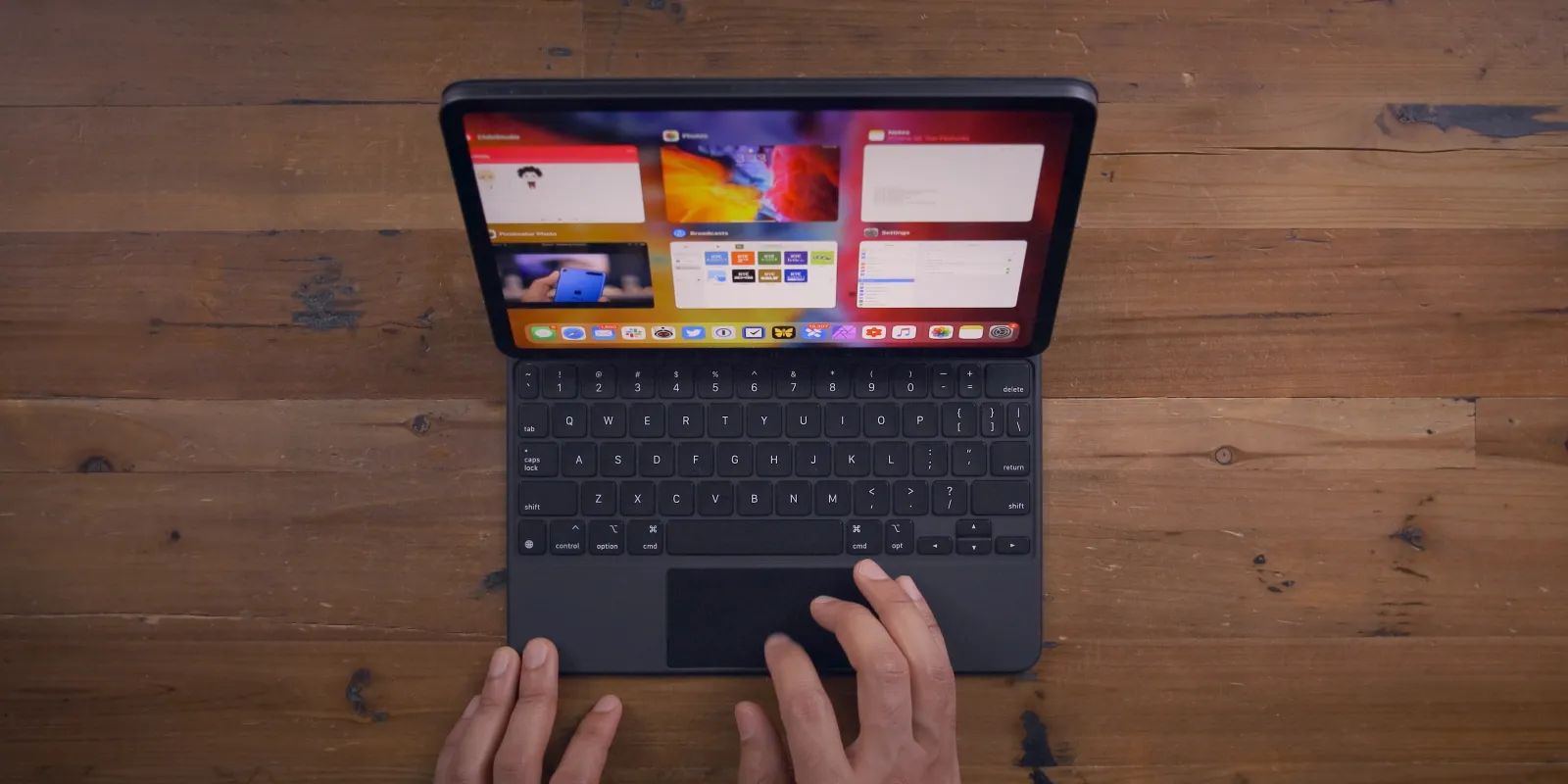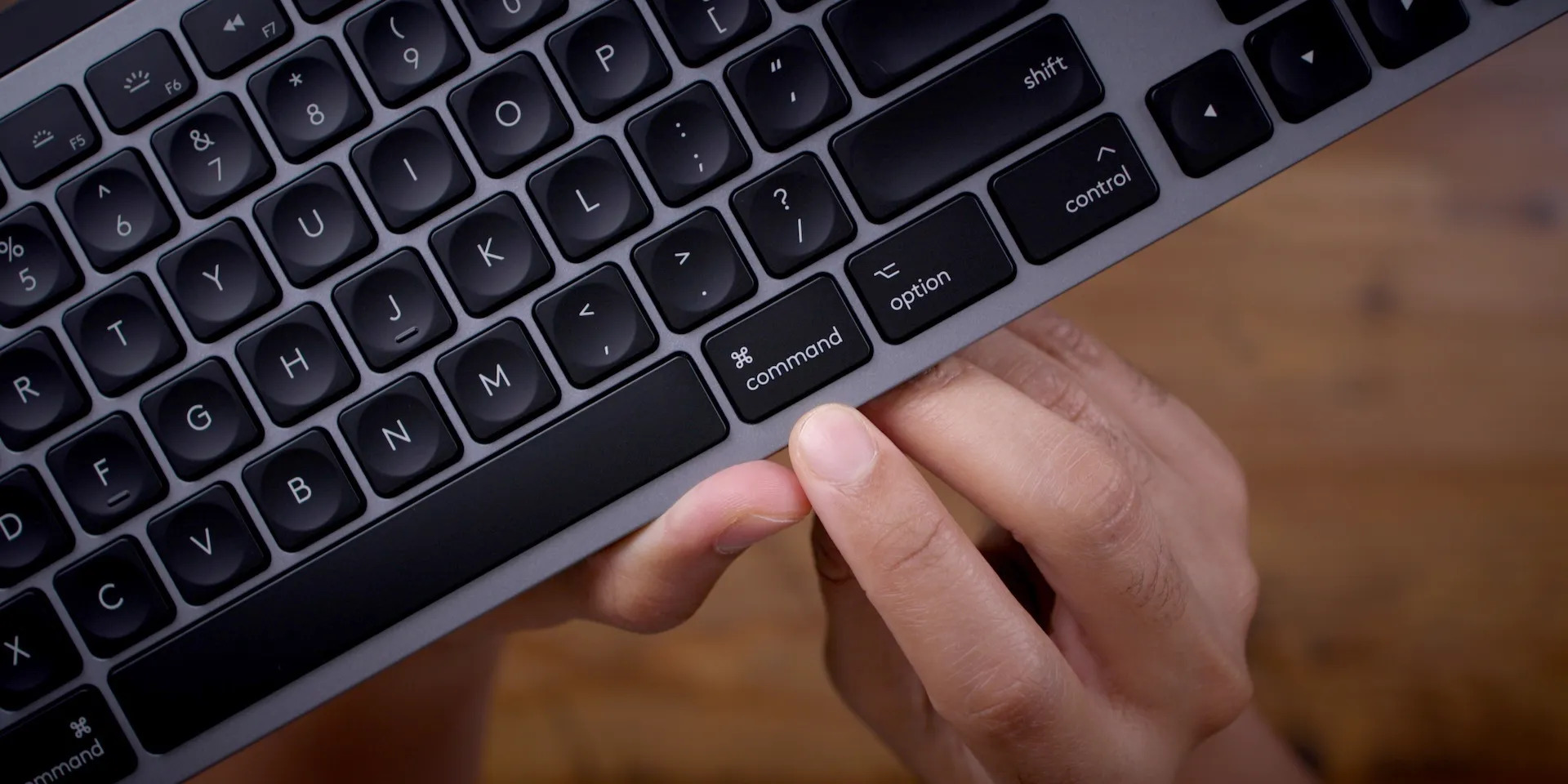Introduction
Welcome to the world of Apple, where sleek design meets innovative technology. If you’re a proud Mac user, you already know how the keyboard plays a crucial role in your everyday computing experience. However, there may come a time when you encounter issues with your Mac keyboard, such as unresponsive keys, incorrect character inputs, or even a complete failure to function. When faced with these frustrating situations, resetting your keyboard can often do the trick to get things back on track.
Before diving into the various methods of resetting your keyboard on a Mac, it’s important to understand why these issues may occur in the first place. Sometimes, a simple software glitch can disrupt the keyboard’s performance, causing it to behave unpredictably. Other times, dirt, dust, or debris may have accumulated beneath the keys, hindering their movement or causing sticky keys. Additionally, compatibility issues or outdated drivers can contribute to keyboard malfunctions.
In this article, we will outline several methods to help you reset your keyboard on your Mac. Each method is designed to address different potential causes of keyboard issues, so you can find the most suitable solution for your specific situation. Whether you’re using a MacBook, MacBook Pro, or iMac, these troubleshooting methods will guide you towards a properly functioning keyboard.
Keep in mind that resetting your keyboard does not involve erasing any of your files or data. It’s a process that focuses solely on restoring the functionality of your keyboard. So, without further ado, let’s explore the various methods that can help you reset your keyboard and bring it back to life.
Why Reset the Keyboard on Mac?
Experiencing keyboard problems on your Mac can be incredibly frustrating, hindering your productivity and making it difficult to perform even the simplest tasks. Resetting the keyboard can help resolve these issues and restore its functionality. Here are a few reasons why you might want to consider resetting your keyboard on a Mac:
- Unresponsive or stuck keys: Over time, keys can become stuck due to dirt, debris, or mechanical issues. Resetting the keyboard can often solve this problem, allowing the keys to regain their proper function.
- Incorrect character inputs: If you find that some keys are producing the wrong characters or symbols on your Mac, resetting the keyboard can help resolve this issue by resetting any software or firmware glitches that may be causing the problem.
- Keyboard freezing or lagging: If your keyboard is freezing or experiencing a significant delay in input, resetting it can help refresh the connection between your keyboard and your Mac, resolving any potential wireless or Bluetooth connectivity issues.
- Software glitches: Occasionally, software glitches can affect the performance of your keyboard. Resetting it can help resolve these glitches, allowing your keyboard to function properly again.
- Compatibility issues: If you have recently installed new software or made system updates, it is possible that these changes have caused compatibility issues with your keyboard. Resetting it can help resolve these issues and restore compatibility.
By resetting your keyboard on a Mac, you can eliminate these frustrating problems and regain full control over your typing experience. It’s a simple and effective troubleshooting step that can save you time, as well as help you avoid the need for costly repairs or replacements.
Method 1: Restart Your Mac
When facing keyboard issues on your Mac, the first and simplest troubleshooting step is often to restart your computer. Restarting your Mac can help resolve temporary software glitches or conflicts that may be affecting your keyboard’s performance. Here’s how to do it:
- Save your work: Before restarting your Mac, make sure to save any open documents or files to prevent data loss.
- Click on the Apple menu: Located on the top-left corner of your screen, click on the Apple logo.
- Choose “Restart”: From the drop-down menu, select the “Restart” option. Alternatively, you can press and hold the power button until the shutdown options appear, then choose “Restart”.
- Wait for the restart: Your Mac will begin the restart process. Wait patiently until the computer shuts down and powers back on.
- Test your keyboard: Once your Mac has restarted, try using your keyboard again to see if the issues have been resolved.
In many cases, a simple restart can fix minor glitches and restore the proper functionality of your keyboard. However, if the issues persist, you may need to try other methods to reset your keyboard settings and resolve the problem.
It’s worth noting that restarting your Mac also clears the computer’s memory, potentially freeing up any resources that could be causing keyboard-related issues. So, before diving into more complex troubleshooting methods, give this simple restart a try.
Method 2: Reset Keyboard Settings in System Preferences
If restarting your Mac didn’t resolve the keyboard issues, you can try resetting the keyboard settings in System Preferences. This method allows you to restore the default settings of your keyboard, which can help eliminate any software configuration problems. Follow these steps:
- Click on the Apple menu: Located on the top-left corner of your screen, click on the Apple logo.
- Select “System Preferences”: From the drop-down menu, choose “System Preferences”.
- Click on “Keyboard”: In the System Preferences window, click on the “Keyboard” icon.
- Go to “Keyboard” tab: In the Keyboard preferences, navigate to the “Keyboard” tab.
- Click on “Restore Defaults”: At the bottom right corner of the Keyboard preferences, click on the “Restore Defaults” button.
- Confirm the reset: A pop-up window will appear, asking if you want to restore the keyboard settings to the default. Click “OK” to proceed.
- Test your keyboard: Once the settings are reset, try using your keyboard again to see if the issues have been resolved.
By resetting the keyboard settings in System Preferences, you are effectively reverting any customized configurations back to the default settings. This can be helpful if you suspect that a software setting or preference might be causing issues with your keyboard.
If the problems persist after resetting the keyboard settings, it’s time to explore other methods to reset your keyboard on a Mac.
Method 3: Update macOS
If your Mac keyboard issues persist, it may be worth considering updating your macOS. Software updates often include bug fixes and improvements that can resolve various system glitches, including keyboard-related problems. Here’s how to update your macOS:
- Check for updates: Click on the Apple menu in the top-left corner and select “System Preferences”. In the System Preferences window, click on “Software Update”. Your Mac will automatically check for available updates.
- Install updates: If updates are available, click on the “Update Now” button to begin the installation process. Follow the on-screen instructions and wait for the updates to download and install.
- Restart your Mac: After the updates are successfully installed, restart your Mac to finalize the update process.
- Test your keyboard: Once your Mac has restarted, check if the keyboard issues have been resolved.
Updating macOS can help address compatibility issues, software bugs, and other underlying problems that may be affecting your keyboard’s performance. It’s generally recommended to keep your system up to date to ensure the best possible functionality and security.
If your Mac is already running the latest version of macOS, or if updating doesn’t resolve the keyboard issues, it’s time to explore alternative solutions to reset your keyboard.
Method 4: Reset PRAM or NVRAM
If you’re still experiencing keyboard problems on your Mac, resetting the PRAM (Parameter RAM) or NVRAM (Non-Volatile Random-Access Memory) can help resolve issues related to keyboard settings and preferences. The PRAM/NVRAM stores various system settings, including keyboard settings, and resetting it can often fix minor software glitches. Here’s how to do it:
- Shut down your Mac: Click on the Apple menu and select “Shut Down”.
- Restart your Mac: After your Mac is completely shut down, press the power button to turn it back on.
- Press and hold specific keys: Immediately after pressing the power button, hold down the Command (⌘), Option, P, and R keys simultaneously.
- Keep holding the keys: Continue holding the keys until you hear the startup chime for the second time (if your Mac makes a startup sound). Then, release the keys.
- Test your keyboard: Once your Mac has finished starting up, check if the keyboard issues have been resolved.
By resetting the PRAM or NVRAM, you are essentially clearing out any customized settings that could be causing conflicts with your keyboard. This can help restore the default keyboard settings and potentially resolve any software-related issues.
If resetting the PRAM or NVRAM doesn’t fix the keyboard problems, don’t worry, there are still other troubleshooting methods to explore.
Method 5: Reset SMC
If you’re still facing keyboard issues on your Mac, resetting the System Management Controller (SMC) can often help resolve hardware-related problems. The SMC is responsible for managing various hardware components, including the keyboard. Resetting the SMC can potentially fix issues related to power management, battery, thermal management, and more. Follow these steps to reset the SMC:
- Shut down your Mac: Click on the Apple menu and select “Shut Down”.
- Unplug the power adapter: Disconnect the power adapter from your Mac.
- Remove the battery (if applicable): If you have a MacBook with a removable battery, carefully remove it.
- Press and hold specific keys for a few seconds: On a MacBook with a removable battery, press and hold the power button for five seconds. On a Mac without a removable battery, press and hold the Shift, Control, and Option keys on the left side of the keyboard, along with the power button, for ten seconds.
- Reconnect the power adapter and battery (if applicable): If you removed the battery, reinsert it. Reconnect the power adapter to your Mac.
- Press the power button to turn on your Mac: Press the power button to start up your Mac as usual.
- Test your keyboard: Once your Mac has started up, check if the keyboard issues have been resolved.
Resetting the SMC can help resolve hardware-related problems that may be affecting your Mac keyboard. This method often proves effective in solving issues such as unresponsive keys, strange behavior, or incorrect inputs. However, if the keyboard problems persist, there are still a few more troubleshooting options to consider.
Method 6: Clean Your Keyboard
If your Mac keyboard is experiencing issues due to dirt, dust, or debris, it’s time to give it a thorough cleaning. Over time, particles can accumulate beneath the keys, hindering their movement or causing sticky keys. Cleaning your keyboard can help improve its performance. Here’s how to clean your Mac keyboard:
- Shut down your Mac: Click on the Apple menu and select “Shut Down”.
- Disconnect the keyboard: If you’re using an external keyboard, disconnect it from your Mac. If you’re using a laptop, you’ll need to proceed with caution and not disconnect the built-in keyboard.
- Turn the keyboard upside down: Gently turn the keyboard upside down to dislodge any loose particles.
- Use compressed air: If there are stubborn particles or debris stuck between the keys, you can use compressed air to blow them out. Hold the canister about 2-3 inches away from the keyboard and spray in a sweeping motion.
- Use a microfiber cloth and isopropyl alcohol: Dampen a microfiber cloth with a small amount of isopropyl alcohol. Gently wipe the keys and keyboard surface to remove any dirt or grime. Avoid using excessive liquid and make sure the cloth is only damp, not wet.
- Let the keyboard dry: Allow the keyboard to air dry completely before reconnecting or using it.
- Reconnect the keyboard (if applicable): If you’re using an external keyboard, reconnect it to your Mac.
- Test your keyboard: Once the keyboard is completely dry, test its functionality to see if the cleaning process resolved the issues.
By cleaning your Mac keyboard, you can remove any physical obstructions that may be affecting its performance. Regular cleaning not only improves the keyboard’s functionality but also ensures a hygienic and pleasant typing experience.
If cleaning the keyboard doesn’t resolve the issues, it’s time to explore the final method to reset your Mac keyboard.
Method 7: Use External Keyboard
If all else fails and your Mac keyboard continues to malfunction, using an external keyboard can provide a temporary solution. Connecting an external keyboard to your Mac will bypass any hardware or software issues that may be affecting the built-in keyboard. Here’s how to use an external keyboard:
- Purchase an external keyboard: If you don’t already have an external keyboard, you can purchase one from various retailers or online stores. Choose a keyboard that is compatible with your Mac model and suits your preferences.
- Connect the external keyboard: Plug the USB or USB-C connector of the external keyboard into an available port on your Mac. Wireless keyboards will require establishing a Bluetooth connection by following the manufacturer’s instructions.
- Ensure the external keyboard is recognized: Once connected, your Mac should automatically recognize the external keyboard. If not, you may need to adjust your Mac’s settings or install any required drivers.
- Test the external keyboard: Use the keys on the external keyboard to ensure that it is functioning correctly. Verify that all keys respond as expected.
Using an external keyboard can be a suitable workaround if your Mac’s built-in keyboard is causing persistent issues. While it may not be a permanent solution, it can enable you to continue using your Mac without being hindered by keyboard problems.
If the external keyboard works flawlessly, you may choose to continue using it until you can resolve the issues with your Mac’s built-in keyboard. However, if you prefer to use the built-in keyboard, it’s time to seek professional assistance or consider repair options for further troubleshooting.
Conclusion
Dealing with keyboard issues on your Mac can be a frustrating experience, but fortunately, there are several methods to help you reset your keyboard and restore its functionality. Whether you’re facing unresponsive keys, incorrect character inputs, or other keyboard malfunctions, the troubleshooting methods outlined in this article can help you resolve these problems.
From restarting your Mac and resetting keyboard settings in System Preferences to updating macOS and resetting the PRAM or NVRAM, each method addresses different potential causes of keyboard issues. Cleaning your keyboard and using an external keyboard are additional options to consider if the built-in keyboard continues to pose problems.
It’s important to remember that troubleshooting steps should be followed in the order given, starting with simpler solutions before moving on to more complex ones. Additionally, be sure to save your work and back up any important files before attempting any reset or adjustments.
While these methods can often resolve keyboard issues, it’s worth noting that persistent problems might require professional assistance or repair. If you’re unable to resolve the issues on your own, consider reaching out to an authorized service provider or contacting Apple Support for further guidance.
By applying these various methods and troubleshooting steps, you can increase the chances of restoring your Mac keyboard’s functionality and ensuring a smooth and enjoyable computing experience.

























